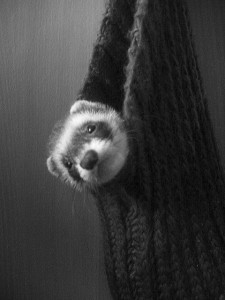Held in the Beveridge Hall in London University’s grand, Art Deco Senate House, this was a celebration of writing from children aged between 5 and 16 – writing that had been judged by authors including Louis de Bernières, Simon Brett, Brian Keaney, Roopa Farooki, Sufiya Ahmed and Rukhsana Khan.
The afternoon opened with a young girl reciting a passage from the Quran which exhorts man to read. Then the mood was flipped on its head with a skit from Islah Abdur-Rahman and Michael Truong of the YouTube hit The Corner Shop Show, squabbling over which of them should be allowed to submit a story to the Young Muslim Writers’ Awards.
The first award, for a story written by someone in Key Stage 1 (5-7 year olds) was presented by children’s writer Caryl Hart, who spoke of stories having the power to create empathy: “the key to combating inequality.”
Next up was 13 year old Zara Ayoub, whose story ‘It was a vampire bite’ has had almost 3 thousand reads on WattPad. She spoke wryly and maturely of finding sources of inspiration in reading and analysing book, but also in films and TV (“you parents will tell you shouldn’t watch too much TV”), in art, in free writing and in watching people. “There is nothing more inspiring than humanity. When I am on a long journey, I pass the time by making up stories about the people around me.” She then presented the award for KS1 poetry to Zakariya Robinson, who won the hearts of the audience by skipping shyly onto the stage and disappearing behind a podium that was almost twice his size.
Azfa Awad, herself a former refugee from Somalia and now Oxford Youth Ambassador and part of the Map of Me project with Half Moon Theatre, performed two exquisite poems, “Origins,” and “Celebration of Life.”
Author Roopa Farouki, presenting the KS2 short story prize, said, “There was passion, emotion, wisdom, humour, drama, meaning and real heart in all the stories
Tim Robertson of the Royal Society of Literature explained how the 500 Fellows of the Society are elected, and how each one signs a ledger, either with Byron’s quill or TS Elliot’s fountain pen. He went on to say how he hoped and believed that in ten, twenty, thirty years’ time, some of the young writers here would sign that ledger
Safeerah Mughal, who is clearly a talent to look out for, won both the Key Stage 4 short story prize for “A Peaceful Sleep” and the poetry prize for “A Quilt of Stars.” Her poem, which evokes a child with nothing but the sky to cover him, has also been selected to promote the Muslim Hands Street Child project. And the adorable Zakariya Robinson was called back up to the stage to receive, “Young Muslim Writer of the Year,” for writing, “well beyond his years.”
There was an acute awareness in the room of the particular burden carried by Muslims at this time – something encapsulated in judge Rukhsana Khan’s poem, ‘Not Guilty’, published in the competition booklet. It was addressed, directly or indirectly, by speaker after speaker.
Radio presenter Yasmin Kahn made everyone laugh with a story of teenage comeuppance and a mustard coloured jumper, before telling the audience, “It has never been more important that Muslim voices are heard.”
Maqsood Ahmed from Muslim Hands quoted Allama Iqbal, “the Pakistani Shakespeare”, saying “Let the young people be the teachers of their elders.”
The Chairman of Muslim Hands, Syed Lakhte Hassanain (having dryly admitted to having left his preprepared speech behind on his kitchen table) asked, “What do we place in our children’s hands? If we given them pens, they become writers. If we give them guns, they become killers.”
Zafar Ashraf of the Yusuf Islam Foundation, told us, “Just as it takes two hands to clap, words need both a writer and a reader. The pages of a book are brought to life only when they are opened.”
But perhaps the most powerful speech of all came from Ziauddin Yousafzai, father of Malala, the youngest ever Nobel Laureate, who was accepting a special award on behalf of his daughter. He declared, “We have to stop following blindly. We must keep the windows of our mind open. We must question everything. Everything. There lies the difference between education and indoctrination.” Then, to thunderous applause, he concluded, “These children are not just the future of our Muslim community. They are the future of the UK. They are the future of humanity.”
If there was any disappointment in the day, it was that we did not hear any of the award-winning stories and poems. Several of us who had been sitting together shared this thought with Maqsood Ahmed, who promised to consider both publishing this year’s winners in a newsletter or blog, and having readers on stage for next year’s winners.
Altogether, an inspiring and moving afternoon, and one to which I was privileged to have been invited.
Full List of Winners:
Key Stage 1 story: Abdul Maatin Riaz – The Pen with 70,000 HeadsKey Stage 1 poem: Zakariya Robinson – Kenning
Key Stage 2 story: Myra Durrani – The Haunted House Strikes Again
Key stage 2 poem: Aminah Rahman – Spring, Autumn and Winter
Key Stage 3 story: Imaan Maryam Irfan – Ivory Demons
Key Stage 3 poem: Naima Mohamend – Free Dubai
Key Stage 4 story: Safeerah Mughal – Peaceful Sleep
Key Stage 4 poem: Safeerah Mughal - Quilt of Stars
Young Muslim Writer of the Year: Zakariya Robinson “for writing beyond his years”













